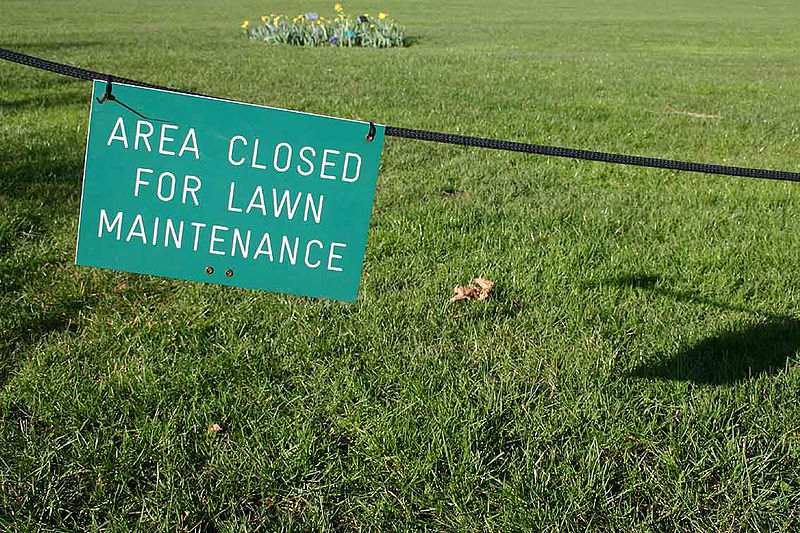Working with landscape maintenance contractors
[edit] Introduction
A well-designed and maintained landscape can attract people to a site and can have a positive impact on property value and personal wellbeing. With more elaborate landscaping, it is fairly common for facilities managers or other property management professionals to outsource maintenance responsibilities to a company that specialises in grounds maintenance.
[edit] Preparing a contract
As is the case with other specialist contractors, it is important to include essential information in tender documentation, such as:
- Identification of the parties involved, addresses, names, licenses, qualifications, insurance and so on.
- Services offered, including specifics that are agreed upon as well as those being excluded. Some examples include:
- Core tasks such as grass cutting, turf, hedge, tree and bed maintenance, maintenance, removal and disposal of landscaping waste and so on.
- Optional tasks such as replacement of trees, bulbs, hedges, shrubs and so on (including the design and maintenance of replacement bedding schemes, if necessary).
- Seasonal planting and cleanup schedules.
- Clarification regarding damage to property (including irrigation systems that may be used).
- Agreements regarding maximum and minimum height levels for grass, grass edging and hedges and other landscape elements.
- Requirements for maintenance and monitoring of moisture detection systems (to ensure irrigation systems do not activate when it’s unnecessary).
- Special environmental concerns (such as schools or other sensitive adjacent areas or ecosystems to be protected from pesticides, fertilisers or pest control measures).
- Notification procedures and documentation for application of any potentially harmful chemicals (such as pesticides).
- Inclusion (or exclusion) of car park maintenance, and tasks such as ice removal or other safety issues.
- Inclusion (or exclusion) of specific activities such as weed control, mulching, leaf collection and removal and so on.
- Equipment storage.
- Procedures for reporting and dealing with vandalism.
- Arrangements when safety restrictions or exclusion zones must be put in place (particularly when landscaping work requires the placement of safety barriers).
- Fees (typically for work completed), including payment plans and form of payment.
- Key dates, including start and finish dates.
- Arrangements regarding access to locked or restricted areas.
It is also helpful to have an inventory of trees, shrubs and other types of landscaping on the site. In order for the list to be suitable for the contract specifications, it should include details such as size, age, condition and maintenance requirements of each item.
[edit] Related articles on Designing Buildings Wiki
Featured articles and news
RTPI leader to become new CIOB Chief Executive Officer
Dr Victoria Hills MRTPI, FICE to take over after Caroline Gumble’s departure.
Social and affordable housing, a long term plan for delivery
The “Delivering a Decade of Renewal for Social and Affordable Housing” strategy sets out future path.
A change to adoptive architecture
Effects of global weather warming on architectural detailing, material choice and human interaction.
The proposed publicly owned and backed subsidiary of Homes England, to facilitate new homes.
How big is the problem and what can we do to mitigate the effects?
Overheating guidance and tools for building designers
A number of cool guides to help with the heat.
The UK's Modern Industrial Strategy: A 10 year plan
Previous consultation criticism, current key elements and general support with some persisting reservations.
Building Safety Regulator reforms
New roles, new staff and a new fast track service pave the way for a single construction regulator.
Architectural Technologist CPDs and Communications
CIAT CPD… and how you can do it!
Cooling centres and cool spaces
Managing extreme heat in cities by directing the public to places for heat stress relief and water sources.
Winter gardens: A brief history and warm variations
Extending the season with glass in different forms and terms.
Restoring Great Yarmouth's Winter Gardens
Transforming one of the least sustainable constructions imaginable.
Construction Skills Mission Board launch sector drive
Newly formed government and industry collaboration set strategy for recruiting an additional 100,000 construction workers a year.
New Architects Code comes into effect in September 2025
ARB Architects Code of Conduct and Practice available with ongoing consultation regarding guidance.
Welsh Skills Body (Medr) launches ambitious plan
The new skills body brings together funding and regulation of tertiary education and research for the devolved nation.
Paul Gandy FCIOB announced as next CIOB President
Former Tilbury Douglas CEO takes helm.
UK Infrastructure: A 10 Year Strategy. In brief with reactions
With the National Infrastructure and Service Transformation Authority (NISTA).























